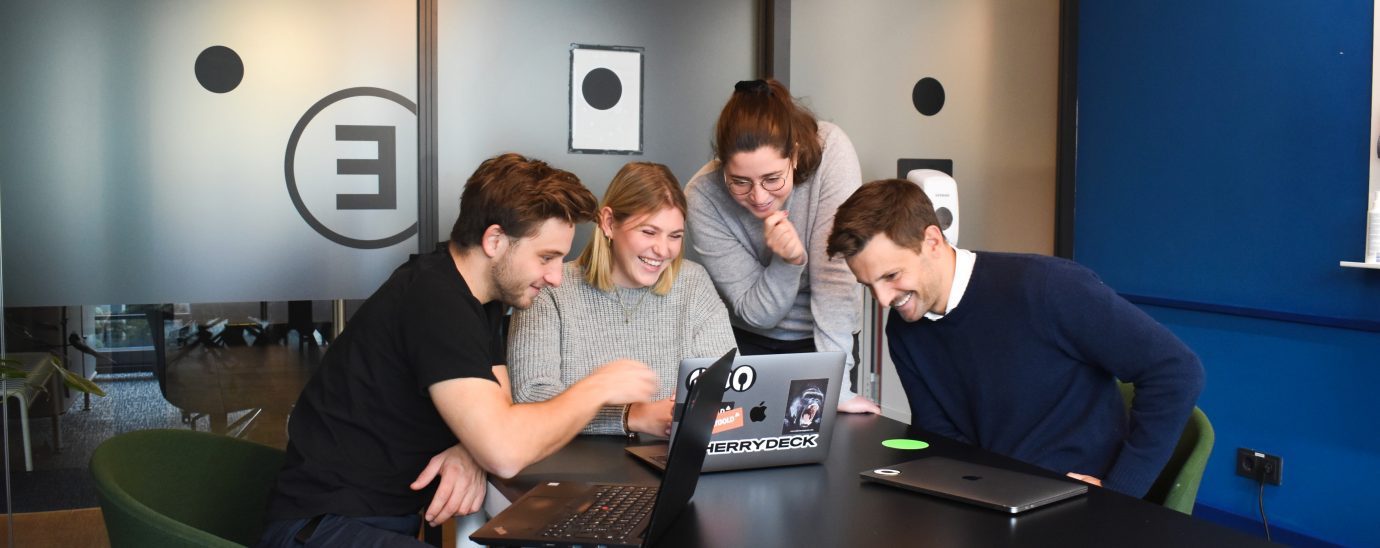Creating the workspace of the future

With retaining and recruiting staff becoming a priority for many companies, Dan Harding, CEO, Sign In App, explains why it’s essential for organizations to consider planning for the long-term management of new a new workspace.
Hybrid working policies are fast becoming expected by employees – both current and future. But while companies recognize the importance of offering hybrid working, many are yet to recognize the new complexities or implement robust strategies to safeguard both productivity and employee wellbeing.
Is there an efficient desk booking process? Who is the responsible key holder and first aider on each day? Who is responsible for roll call in the event of an evacuation? How is the business ensuring young employees are not in the office alone? And that’s just essential housekeeping. Where is the training and mentoring for new starters? How can managers determine whether employees are productive, happy – and not about to jump ship for the competition?
Shifting Expectations
The working environment has changed for good. Employers across the board report that both existing staff and potential recruits are increasingly raising questions regarding the business’ hybrid working policy. Many companies have permanently overhauled office spaces, cutting costs by moving to downsized locations to be used as occasional touchdown spaces.
But this is not a simple transition, and hybrid working policies cannot be set in stone. This is a way of working that is still in its infancy. Individuals have yet to determine how best to embrace hybrid working, and managers will have to play a key role in ensuring strategies evolve in response to a range of factors – from successfully engaging new starters to maintaining employee performance.
One point is absolutely clear: simply offering staff the option to mix and match between home and office as they prefer is not a robust approach. An effective hybrid working policy is complex. It needs to encompass a range of factors from staff wellbeing, training and integrating team processes to ensuring a key holder and first aider is always on-site. It requires intelligent, real-time management of the office space to ensure it is used both effectively and safely.
Employee Safety
For SMEs, even the basic coordination of managing office openings can become a complex juggling act when so many individuals want to work from home – especially on Mondays and Fridays! This is why both HR and management need fast access to information about employees’ hybrid working activity. Apps that show whether an individual is working from home or in the office provide a quick way to keep track of key factors, from office capacity to the hours worked by each individual.
Modern workplace management apps can identify the designated key holder, first aider and fire marshal on each day – and provide an immediate list of office attendees for roll call in the event of an evacuation. Managers leaving the building will be immediately notified if only junior staff are left – ensuring the building is safely locked up each night.
Certain apps also enable employees to book desks – a key requirement if space has been downsized – and keep track of office utilization to provide insight into trends in hybrid working. With individuals encouraged to update their status when online (in the office or at home), managers know the staff’s hours and when. This process is also helping employees to embrace true flexible working – firms that allow individuals to work the hours that suit them best, whether that is 7am to 3pm or 10am to 6pm, even working longer hours Monday to Thursday and working a half-day on Friday, will enjoy both improved productivity and better retention.
Nuanced Strategies
Monitoring employee activity via an app can also flag up if an employee is working too late at night or exceeding the expected hours to avoid burnout and provide insight into the behaviours of different departments, teams, and individuals.
This insight will be vital in evolving hybrid working strategies that must consider each employee’s expectations and the different challenges facing each job role. Development teams, for example, can function effectively in a remote environment; customer experience teams, in contrast, need more face-to-face interaction and a way to share ideas.
Plus of course, any new employees – especially graduates and apprentices – need to learn about the business, the culture and this will require a robust onboarding process, including face-to-face interaction with managers. Switched on companies are now extending hybrid working policies to include an initial expectation that new starters must attend the office more frequently – as often as three or four days a week – for the first few weeks, before moving to a more flexible working model to ensure the correct training and mentoring experiences are in place.
Employee Retention
With individuals working primarily outside the office, managers will need new skills and processes to manage performance and keep track of employee welfare. Even the most poker-faced individual will show signs of strain at some point during a traditional Monday to Friday in the office that managers and colleagues will spot quickly. Early interventions, including a casual chat over coffee, have always been an important part of team management.
The situation is quite different if the interaction is limited to video calls and a monthly office visit. While Key Performance Indicators (KPIs) offer an overview of output and performance, they can hide the truth. For example, is the individual achieving goals only by working longer than the contracted hours? Are they performing well but actually feeling isolated and no longer part of the team? Is there a risk this person may actually be looking for an alternative job?
Armed with the insight provided by an app about the hours as well as responses to wellbeing questions that can be asked each time an employee signs in or out at home, managers can immediately spot trends or problems. This allows them to take a proactive approach, for example, requesting the individual come to the office for a management meeting to discuss the issue.
Conclusion
Achieving effective hybrid working is not going to be an easy transition – especially for leaders. Businesses have not yet been through a full cycle of hybrid working – management has attributed problems with underperforming employees or fractured teams to the upheaval endured over the past 18 months. Moving forward, managers will need to determine how to motivate a dispersed sales team when goals are not being met. Where is the team huddle? How can managers identify individuals’ training and mentoring needs – and ensure they are delivered effectively – without compromising individual hybrid working goals and expectations?
READ MORE:
- How to successfully reopen your office in a post-Covid-19 world
- Founder Feature: Neil Purcell, founder and CEO, Talent Works
- Ensuring a secure digital transformation journey
- Build these five habits to reduce the risk of ransomware
A hybrid model cannot be prescriptive. Nor can it be set in stone. This is the beginning of the hybrid working evolution. From tracking desk usage versus capacity to understanding how individuals are embracing the new working model to monitoring productivity and employee churn – it will take a while for any business, any individual to settle into this approach. Businesses need to put in place robust processes that support the hybrid infrastructure, but they also shouldn’t be frightened to have a hybrid model that can change, adapt and grow.
For more news from Top Business Tech, don’t forget to subscribe to our daily bulletin!
